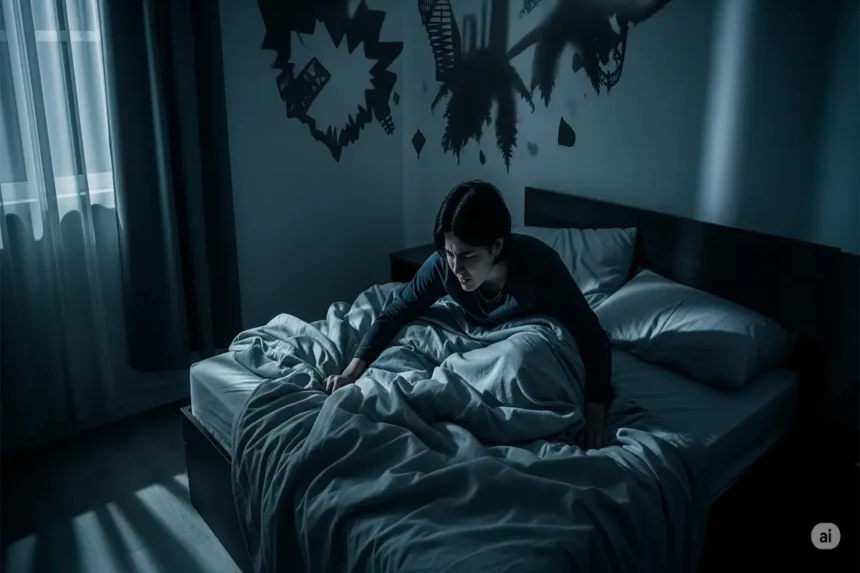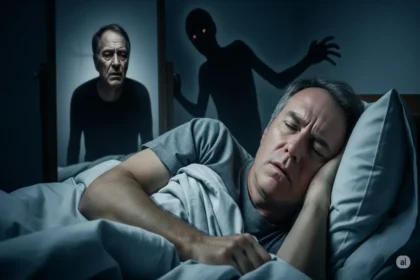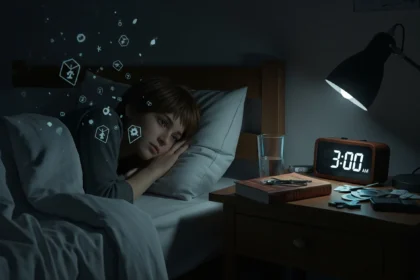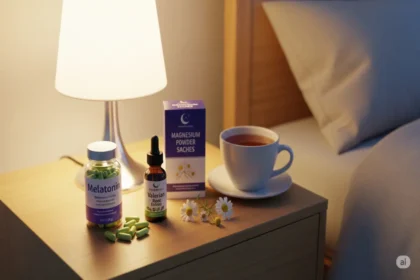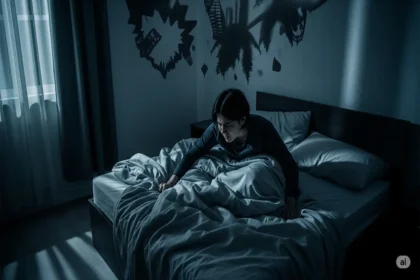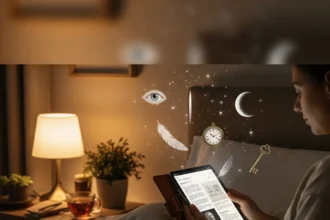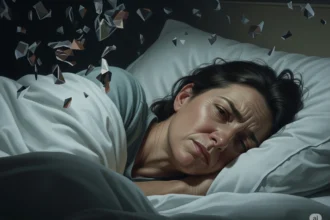The sudden jolt awake, heart pounding, a cold sweat clinging to your skin, the lingering tendrils of fear from a terrifying dream still vivid in your mind. This is the unwelcome reality of Nightmares & Bad Dreams, unwelcome intruders into our nightly sanctuary. While dreams are a universal and often fascinating aspect of human experience, their darker counterparts can leave us feeling anxious, exhausted, and even dreading the approach of sleep. For centuries, these disturbing nocturnal narratives have been attributed to everything from demonic possession to a heavy meal before bed. Yet, modern science is increasingly shedding light on the true origins of nightmares, revealing them not as supernatural visitations, but as complex products of our own brains, often serving as powerful, albeit unsettling, signals about our waking lives. Understanding why they happen is the first step towards reclaiming the peace of our slumber.
Almost everyone experiences a bad dream or a nightmare at some point. The distinction, while subtle, is important: a “bad dream” is typically unpleasant or disturbing but doesn’t necessarily cause you to wake up in distress, whereas a “nightmare” is a vivid, frightening dream that causes you to awaken suddenly, often with a strong emotional response, making it difficult to fall back asleep. These intense experiences are primarily associated with Rapid Eye Movement (REM) sleep, the stage where most vivid dreaming occurs. During REM, our brains are highly active, processing emotions and consolidating memories, and it’s this very activity that can sometimes produce our deepest fears in cinematic detail.
The Brain’s Dark Canvas: Why REM Sleep Fuels Nightmares
To understand nightmares, we must first revisit the unique neurological landscape of REM sleep. During this paradoxical stage, the brain’s limbic system, particularly the amygdala (the brain’s emotional processing center), is highly active. This increased emotional intensity, coupled with the relative suppression of the prefrontal cortex (responsible for logical reasoning and impulse control), creates an environment ripe for vivid, emotionally charged narratives. It’s as if the brain’s emotional engine is running at full throttle, while its rational brakes are disengaged.
Simultaneously, the brain is largely devoid of norepinephrine, a stress-related neurotransmitter. This allows for a “safe” processing of emotional content without the physiological stress response that would accompany it in wakefulness. However, when this processing goes awry, or when the emotional load is too heavy, the result can be a nightmare. The brain is attempting to work through intense emotions or unresolved conflicts, and sometimes, this process manifests as a terrifying scenario. It’s a kind of “overnight therapy” that, when overwhelmed, can become a distressing ordeal.
Common Triggers: What Fuels the Fear?
Nightmares are rarely random; they are often a direct reflection of our waking lives, influenced by a complex interplay of psychological, physiological, and environmental factors.
1. Stress and Anxiety: The Most Common Culprits
Perhaps the most significant and common trigger for nightmares is stress and anxiety. When we are under significant pressure, whether from work, relationships, financial worries, or major life changes, our brains remain in a heightened state of arousal. This “fight or flight” response, designed for acute danger, can spill over into our sleep. The brain, attempting to process and cope with these overwhelming feelings, often translates them into symbolic or literal frightening scenarios in dreams.
Consider a student facing final exams. They might dream of being unprepared, failing a test, or being chased by an unseen force – all direct manifestations of their academic anxiety. Or an individual navigating a difficult breakup might find themselves dreaming of abandonment or being trapped. These dreams are the brain’s way of grappling with the emotional weight of waking stressors, sometimes intensifying them in an effort to process them more effectively.
2. Trauma and PTSD: Reliving the Past
For individuals who have experienced significant trauma, nightmares can be a particularly debilitating symptom. Post-Traumatic Stress Disorder (PTSD) is frequently characterized by recurring nightmares that involve re-experiencing the traumatic event, either directly or symbolically. These dreams are often vivid, terrifying, and can feel incredibly real, leading to fragmented sleep and increased daytime distress.
The brain, in an attempt to integrate and make sense of the trauma, repeatedly replays the event in a dream state. While this might be a natural healing mechanism, for those with PTSD, the emotional intensity can be overwhelming, trapping them in a cycle of fear. Therapies specifically designed for PTSD, such as Eye Movement Desensitization and Reprocessing (EMDR) or Cognitive Behavioral Therapy for Insomnia (CBT-I), often address these nightmares directly, helping individuals process the trauma in a more adaptive way.
3. Medications and Substances: Chemical Influences
Certain medications can significantly impact dream content and increase the likelihood of nightmares. Drugs that affect neurotransmitter levels in the brain, particularly those influencing serotonin, dopamine, or acetylcholine, can alter dream vividness and emotional tone. Antidepressants, especially SSRIs, and blood pressure medications (like beta-blockers) are commonly cited culprits. When discontinuing certain medications, particularly those that suppress REM sleep, individuals may experience a “REM rebound,” leading to more frequent and intense dreams, including nightmares.
Similarly, substances like alcohol, illicit drugs, and even excessive caffeine consumption can disrupt sleep architecture and trigger nightmares. While alcohol might initially induce sleep, it fragments REM sleep in the latter half of the night, often leading to more vivid and disturbing dreams as the body metabolizes it.
4. Sleep Disorders: Underlying Conditions
Nightmares can also be a symptom of underlying sleep disorders. Conditions like sleep apnea, where breathing repeatedly stops and starts during sleep, can cause fragmented sleep and increased arousal, leading to more frequent and disturbing dreams. Narcolepsy, a chronic neurological condition characterized by overwhelming daytime sleepiness, is also associated with vivid, often frightening, dreams that can occur at any point in the sleep cycle. Addressing the primary sleep disorder is crucial for alleviating the associated nightmares.
5. Lifestyle Factors: Diet, Illness, and Routine
Even seemingly minor lifestyle choices can contribute to nightmares. Eating a heavy meal close to bedtime can activate metabolism and brain activity, potentially leading to more vivid dreams. Illnesses, especially those accompanied by fever, can also trigger disturbing dreams due to altered brain chemistry and discomfort. An irregular sleep schedule, characterized by inconsistent bedtimes and wake times, disrupts the body’s natural circadian rhythm, making sleep more fragmented and potentially increasing nightmare frequency.
How to Stop Them: Reclaiming Your Nightly Peace
While nightmares can feel overwhelming, there are effective strategies, rooted in scientific understanding, to reduce their frequency and intensity.
1. Address Underlying Stress and Anxiety
Since stress is a primary trigger, managing it in your waking life is paramount.
- Mindfulness and Meditation: Regular practice can help calm the nervous system and reduce overall anxiety levels.
- Journaling: Beyond dream journaling, writing about your daily worries and concerns before bed can help offload them from your mind, preventing them from spilling into your dreams.
- Therapy: Cognitive Behavioral Therapy (CBT) can be highly effective in identifying and challenging negative thought patterns that contribute to anxiety.
2. Optimize Sleep Hygiene
Creating an optimal sleep environment and consistent routine is foundational.
- Consistent Schedule: Go to bed and wake up at the same time every day, even on weekends, to regulate your circadian rhythm.
- Cool, Dark, Quiet Room: Ensure your bedroom is conducive to sleep.
- Avoid Stimulants and Heavy Meals: Limit caffeine and alcohol, especially in the hours before bed. Avoid large, rich meals close to bedtime.
- Wind-Down Routine: Establish a relaxing pre-sleep ritual, such as reading a book, taking a warm bath, or listening to calming music. Avoid screens (phones, tablets, computers) for at least an hour before bed.
3. Image Rehearsal Therapy (IRT)
This is a highly effective cognitive-behavioral technique specifically designed for chronic nightmares, particularly those related to trauma.
- Identify the Nightmare: Choose one recurring nightmare that causes significant distress.
- Rewrite the Narrative: While awake, intentionally change the nightmare’s script. Alter the ending, introduce a new character, or give yourself a tool to overcome the threat. Make it less frightening or even positive.
- Rehearse the New Script: Mentally rehearse this new, positive version of the dream for 5-10 minutes daily, especially before bed. The goal is to “overwrite” the old, distressing memory with a new, more manageable one. Over time, the brain learns the new script, and the nightmare’s intensity often diminishes or it ceases altogether.
4. Consult a Professional
If nightmares are frequent, severely disruptive, or impacting your daily functioning, it’s crucial to seek professional help. A sleep specialist, psychologist, or psychiatrist can:
- Rule out underlying medical conditions: Such as sleep apnea or other sleep disorders.
- Review medications: Adjusting dosages or switching medications might be necessary.
- Provide specialized therapy: Therapies like IRT or other forms of CBT can be highly effective.
- Address trauma: For those with PTSD, comprehensive trauma therapy is essential.
Embracing the Message, Finding Peace
Nightmares and bad dreams, while distressing, are often the brain’s way of communicating with us. They are not random acts of cruelty but powerful signals, urging us to pay attention to unresolved emotions, unaddressed stressors, or underlying physiological imbalances. They are a testament to the brain’s tireless work, even in slumber, to process our experiences and maintain our psychological equilibrium.
By understanding the “why” behind these unsettling nocturnal narratives, we empower ourselves to take proactive steps towards the “how to stop them.” It’s a journey of self-awareness, self-care, and sometimes, seeking professional guidance. Reclaiming the peace of our nightly adventures allows us not only to sleep more soundly but also to wake up feeling more rested, resilient, and ready to face the world, no longer haunted by the shadows of our subconscious fears.
Disclaimer: The information provided in this article is for general informational purposes only and does not constitute medical advice. It is not a substitute for professional medical advice, diagnosis, or treatment. Always seek the advice of your physician or other qualified health provider with any questions you may have regarding a medical condition. Never disregard professional medical advice or delay in seeking it because of something you have read on this website.

